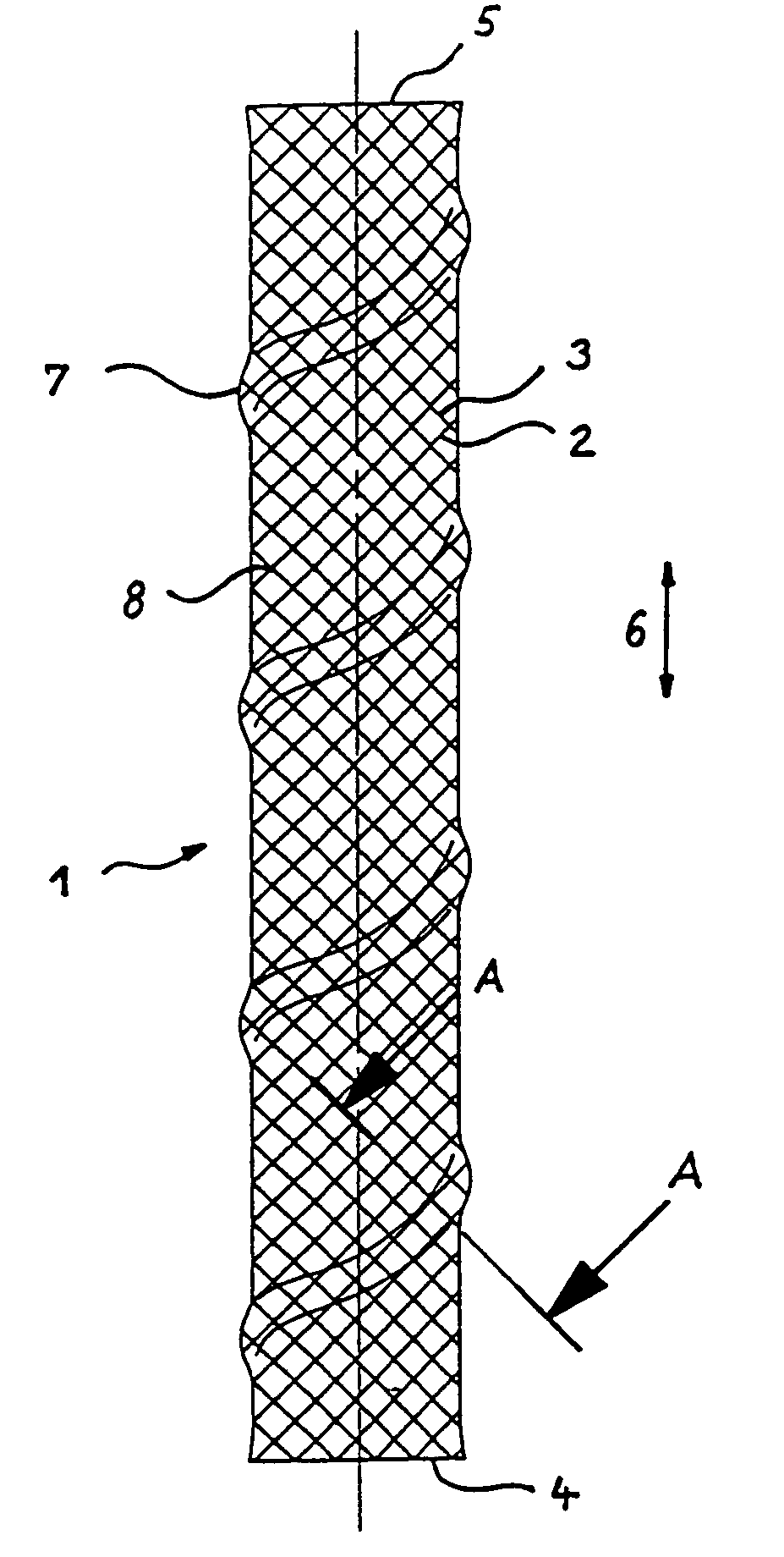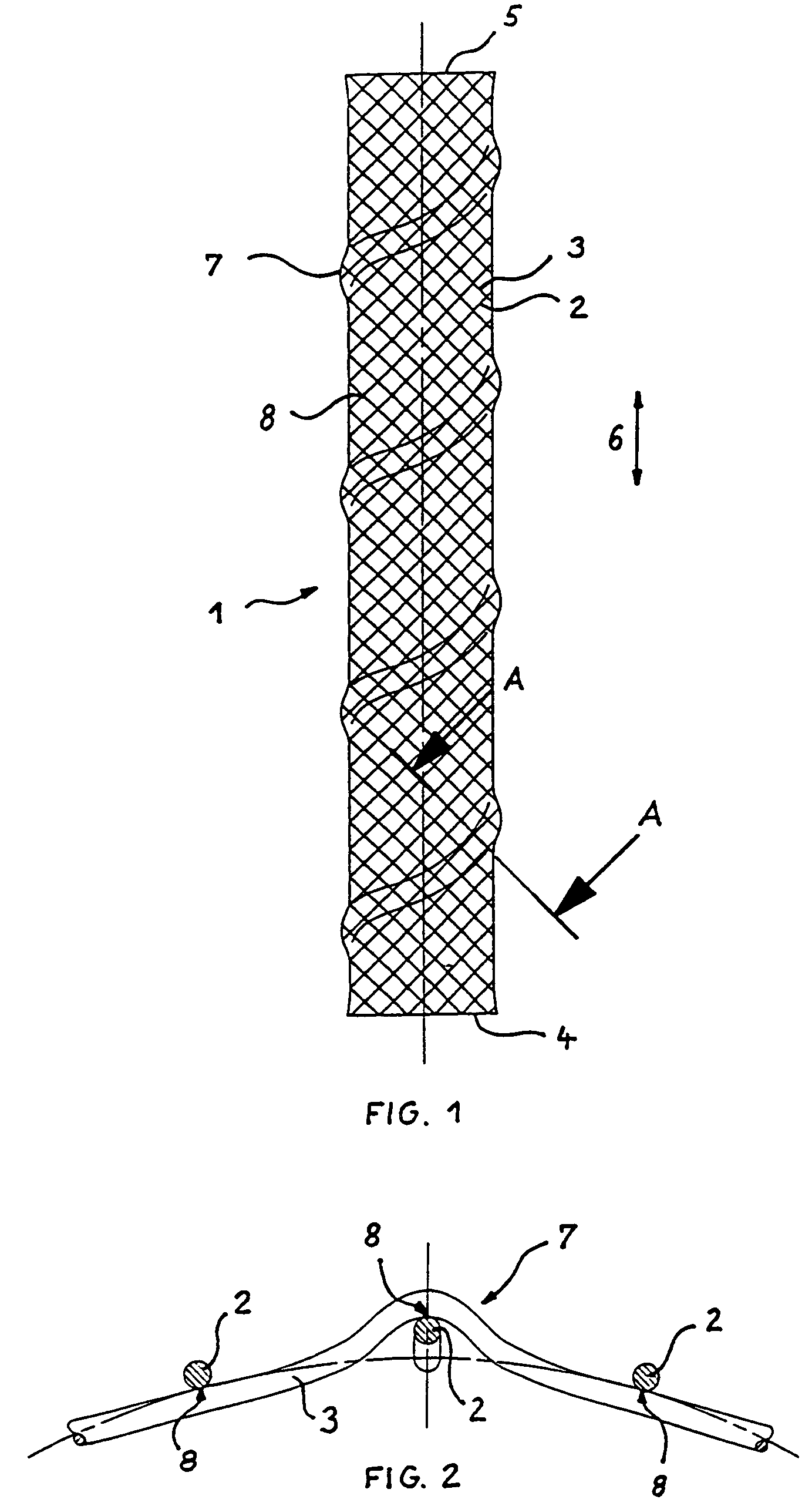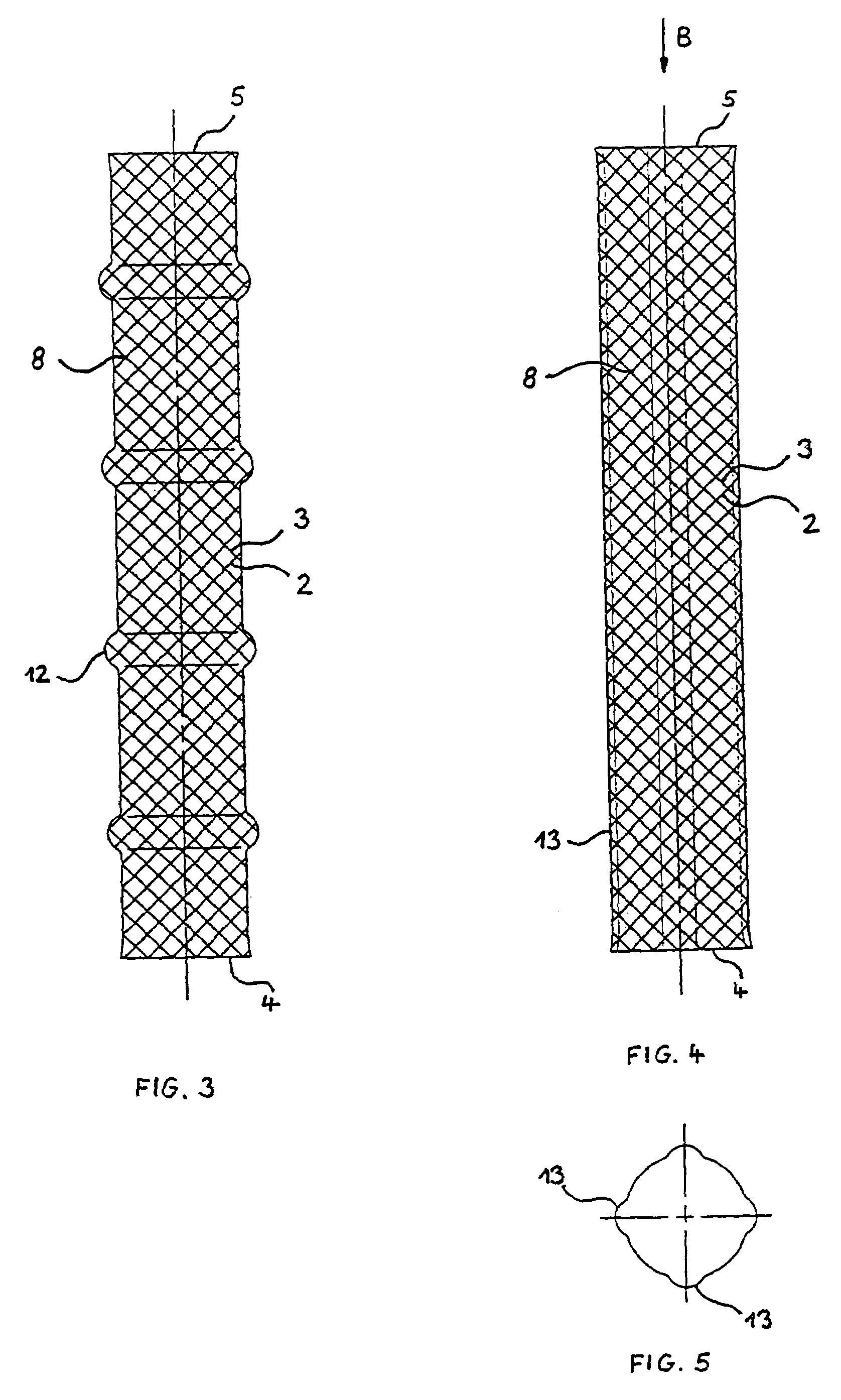Stents with proximal and distal end elevations
a proximal and distal end elevation technology, applied in the field of stents, can solve the problems of self-fixation characteristics, risk of local axial displacement of the stent, and the inability of the stent to resist flattening, and achieve the effect of less shortening the stent and being manufactured easier
- Summary
- Abstract
- Description
- Claims
- Application Information
AI Technical Summary
Benefits of technology
Problems solved by technology
Method used
Image
Examples
Embodiment Construction
[0028]The stent depicted in FIG. 1 comprises a flexible self-expanding braided tubular wall 1 which is composed of a first plurality of parallel spring stainless steel wires 2 helically wound in a first direction crossing a second plurality of parallel spring stainless steel wires 3 helically wound in a second direction opposite to the first one. The braided structure assures contraction of the stent in the radial direction when the proximal and distal ends 4 and 5 of the stent are pulled away from one another as exemplified by arrows 6, and self-expansion of the stent in the radial direction when the pull according to arrows 6 is released. This configuration is well known in the art and needs no further explanation. Of course, other known braidings or patterns providing the same effect may be used.
[0029]The tubular wall 1 of the stent having a helical pattern of elevations 7 which is outwardly formed and has an angle of gradient or pitch slightly smaller than the angle of gradient ...
PUM
| Property | Measurement | Unit |
|---|---|---|
| angles | aaaaa | aaaaa |
| braiding angle | aaaaa | aaaaa |
| braiding angle | aaaaa | aaaaa |
Abstract
Description
Claims
Application Information
 Login to View More
Login to View More - R&D
- Intellectual Property
- Life Sciences
- Materials
- Tech Scout
- Unparalleled Data Quality
- Higher Quality Content
- 60% Fewer Hallucinations
Browse by: Latest US Patents, China's latest patents, Technical Efficacy Thesaurus, Application Domain, Technology Topic, Popular Technical Reports.
© 2025 PatSnap. All rights reserved.Legal|Privacy policy|Modern Slavery Act Transparency Statement|Sitemap|About US| Contact US: help@patsnap.com



